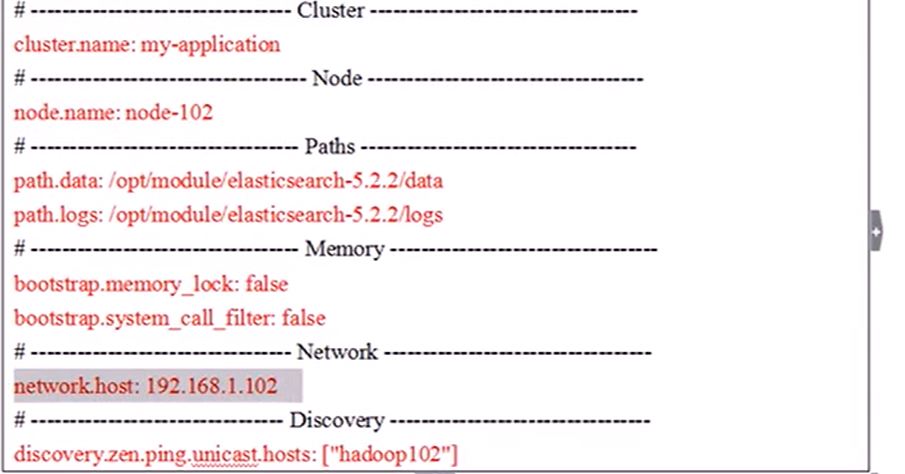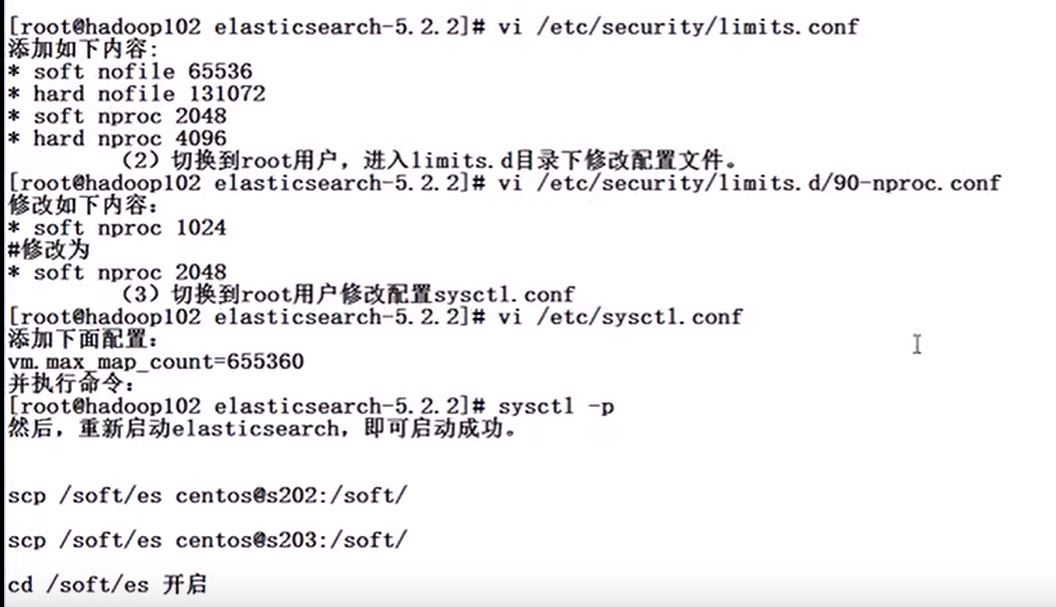您好,登录后才能下订单哦!
这篇文章主要介绍“go语言操作es的方法”的相关知识,小编通过实际案例向大家展示操作过程,操作方法简单快捷,实用性强,希望这篇“go语言操作es的方法”文章能帮助大家解决问题。
Elasticsearch(ES)是一个基于Lucene构建的开源、分布式、RESTful接口的全文搜索引擎。Elasticsearch还是一个分布式文档数据库,其中每个字段均可被索引,而且每个字段的数据均可被搜索,ES能够横向扩展至数以百计的服务器存储以及处理PB级的数据。可以在极短的时间内存储、搜索和分析大量的数据。通常作为具有复杂搜索场景情况下的核心发动机。
当你经营一家网上商店,你可以让你的客户搜索你卖的商品。在这种情况下,你可以使用ElasticSearch来存储你的整个产品目录和库存信息,为客户提供精准搜索,可以为客户推荐相关商品。
当你想收集日志或者交易数据的时候,需要分析和挖掘这些数据,寻找趋势,进行统计,总结,或发现异常。在这种情况下,你可以使用Logstash或者其他工具来进行收集数据,当这引起数据存储到ElasticsSearch中。你可以搜索和汇总这些数据,找到任何你感兴趣的信息。
对于程序员来说,比较有名的案例是GitHub,GitHub的搜索是基于ElasticSearch构建的,在github.com/search页面,你可以搜索项目、用户、issue、pull request,还有代码。共有40~50个索引库,分别用于索引网站需要跟踪的各种数据。虽然只索引项目的主分支(master),但这个数据量依然巨大,包括20亿个索引文档,30TB的索引文件。
go get github.com/olivere/elastic

elastic.SetSniff(false)
client, _ := elastic.NewClient( // ... // 将sniff设置为false后,便不会自动转换地址 elastic.SetSniff(false), )

var client *elastic.Client
var host = "http://xxx:9200"
//初始化es驱动
func init() {
errorlog := log.New(os.Stdout, "app", log.LstdFlags)
var err error
client, err = elastic.NewClient(elastic.SetErrorLog(errorlog), elastic.SetURL(host), elastic.SetSniff(false))
if err != nil {
panic(err)
}
info, code, err := client.Ping(host).Do(context.Background())
if err != nil {
panic(err)
}
fmt.Printf("Es return with code %d and version %s \n", code, info.Version.Number)
esversionCode, err := client.ElasticsearchVersion(host)
if err != nil {
panic(err)
}
fmt.Printf("es version %s\n", esversionCode)
}info —>employee -------FirstName,LastName,Age,About,Interests
结构体方式
type Employee struct {
FirstName string `json:"firstname"`
LastName string `json:"lastname"`
Age int `json:"age"`
About string `json:"about"`
Interests []string `json:"interests"`
}
//创建索引
func create() {
//1.使用结构体方式存入到es里面
e1 := Employee{"jane", "Smith", 20, "I like music", []string{"music"}}
put, err := client.Index().Index("info").Type("employee").Id("1").BodyJson(e1).Do(context.Background())
if err != nil {
panic(err)
}
fmt.Printf("indexed %d to index %s, type %s \n", put.Id, put.Index, put.Type)
}
func main() {
create()
}字符串方式:
func create1() {
//使用字符串
e1 := `{"firstname":"john","lastname":"smith","age":22,"about":"i like book","interests":["book","music"]}`
put, err := client.Index().Index("info").Type("employee").Id("2").BodyJson(e1).Do(context.Background())
if err != nil {
panic(err)
}
fmt.Printf("indexed %d to index %s, type %s \n", put.Id, put.Index, put.Type)
}//查找
func get() {
get, err := client.Get().Index("info").Type("employee").Id("1").Do(context.Background())
if err != nil {
panic(err)
}
if get.Found {
fmt.Printf("got document %s in version %d from index %s,type %s \n", get.Id, get.Version, get.Index, get.Type)
}
}
func main() {
get()
}func update() {
res, err := client.Update().Index("info").Type("employee").Id("1").Doc(map[string]interface{}{"age": 88}).Do(context.Background())
if err != nil {
fmt.Println(err.Error())
}
fmt.Printf("update age %s \n", res.Result)
}
func main() {
update()
}//删除
func delete() {
res, err := client.Delete().Index("info").Type("employee").Id("1").Do(context.Background())
if err != nil {
fmt.Println(err.Error())
}
fmt.Printf("delete result %s", res.Result)
}
func main() {
delete()
}func query() {
var res *elastic.SearchResult
var err error
res, err = client.Search("info").Type("employee").Do(context.Background())
printEmployee(res, err)
}
//打印查询的employee
func printEmployee(res *elastic.SearchResult, err error) {
if err != nil {
fmt.Print(err.Error())
return
}
var typ Employee
for _, item := range res.Each(reflect.TypeOf(typ)) {
t := item.(Employee)
fmt.Printf("%#v\n", t)
}
}
//条件查找
func query1() {
var res *elastic.SearchResult
var err error
//查找方式一:
q := elastic.NewQueryStringQuery("lastname:smith")
res, err = client.Search("info").Type("employee").Query(q).Do(context.Background())
printEmployee(res, err)
//查找方法二:
if res.Hits.TotalHits > 0 {
fmt.Printf("found a total fo %d Employee", res.Hits.TotalHits)
for _, hit := range res.Hits.Hits {
var t Employee
err := json.Unmarshal(*hit.Source, &t) //另一种取出的方法
if err != nil {
fmt.Println("failed")
}
fmt.Printf("employee name %s:%s\n", t.FirstName, t.LastName)
}
} else {
fmt.Printf("found no employee \n")
}
}年龄大于21的查找
//年龄大于21的
func query3() {
var res *elastic.SearchResult
var err error
boolq := elastic.NewBoolQuery()
boolq.Must(elastic.NewMatchQuery("lastname", "smith"))
boolq.Filter(elastic.NewRangeQuery("age").Gt(21))
res, err = client.Search("info").Type("employee").Query(boolq).Do(context.Background())
printEmployee(res, err)
}
//打印查询的employee
func printEmployee(res *elastic.SearchResult, err error) {
if err != nil {
fmt.Print(err.Error())
return
}
var typ Employee
for _, item := range res.Each(reflect.TypeOf(typ)) {
t := item.(Employee)
fmt.Printf("%#v\n", t)
}
}包含book的
//包含book的
func query4() {
var res *elastic.SearchResult
var err error
matchPhrase := elastic.NewMatchPhraseQuery("about", "book")
res, err = client.Search("info").Type("employee").Query(matchPhrase).Do(context.Background())
printEmployee(res, err)
}分页
//分页
func list(size, page int) {
var res *elastic.SearchResult
var err error
if size < 0 || page < 1 {
fmt.Printf("param error")
return
}
res, err = client.Search("info").Type("employee").Size(size).From((page - 1) * size).Do(context.Background())
printEmployee(res, err)
}配置文件修改
node.name : node-102 node.name : node-103 network.host: 192.168.1.102 network.host: 192.168.1.103 discovery.zen.ping.unicast.hosts: ["s201","s202","s203"]


关于“go语言操作es的方法”的内容就介绍到这里了,感谢大家的阅读。如果想了解更多行业相关的知识,可以关注亿速云行业资讯频道,小编每天都会为大家更新不同的知识点。
免责声明:本站发布的内容(图片、视频和文字)以原创、转载和分享为主,文章观点不代表本网站立场,如果涉及侵权请联系站长邮箱:is@yisu.com进行举报,并提供相关证据,一经查实,将立刻删除涉嫌侵权内容。